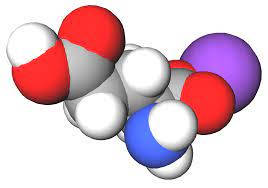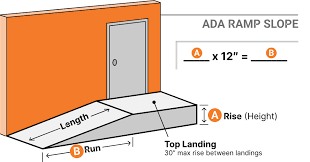INTRODUCTION:
When it comes to virulence and pathogenicity, the microbiological world takes notice of E622 despite its little size. The little virulence-associated mobile element E622 has been shown to have a big effect on the way certain bacteria operate. This article will define E622, discuss its distribution, and discuss its function in bacterial infections and pathogenicity.
UNVEILING E622: THE MINIATURE MOBILE ELEMENT
The mobile genetic element E622 is widespread in bacteria, especially those that are pathogenic to humans and other animals. In the microbial world, this genetic element is among the smallest mobile elements, with a typical length of fewer than 1,000 base pairs. Despite its little stature, E622 is an important player in the pathogenicity of certain bacteria.
THE ROLE OF E622 IN BACTERIAL VIRULENCE
Because of its effect on a bacteria’s pathogenicity, E622 is classified as a virulence-associated mobile element. It may transport genes encoding virulence factors, chemicals or proteins that increase the bacterium’s pathogenicity. Toxins, adhesins, and other compounds are all examples of virulence factors that help bacteria infiltrate, penetrate, and destroy their hosts’ tissues.
WHERE E622 IS FOUND
The presence of E622 is not restricted to any one class of bacteria but is instead seen in many different types of harmful bacteria. Bacteria that cause diseases such UTIs, gastroenteritis, and respiratory infections have been shown to have it. Researchers have looked at these settings to learn more about E622 and how it affects the severity of infections.
THE MECHANISMS OF E622
The potential of E622 to be horizontally transmitted across bacteria is very interesting. So, it may “jump” from one bacteria to another, possibly contaminating non-pathogenic strains with virulence proteins. This kind of horizontal transmission is crucial to the development and spread of new, more dangerous bacterial strains.
MATERIALS AND METHODS
BACTERIAL STRAINS AND GROWTH CONDITIONS.
Pseudomonas syringae was cultured at 30 degrees Celsius in 5 milliliters of King’s B medium with constant shaking for 12 hours. At 37 degrees Celsius, 5 ml of Luria-Bertani medium was used to cultivate Escherichia coli bacteria. Streptomycin was added at a dosage of 100 g ml1, kanamycin at 50 g ml1, ampicillin at 150 g ml1, and tetracycline at 30 g ml1.
CONSTRUCTION OF AMPICILLIN-LABELED E622.
Cloning of the E622 element into the XbaI site of the integration vector pCKTR (28), which was amplified from the pPMA4326C plasmid of ES4326 using primers E622+ (5′-CAAGGGTTGCCAACTTTGCACG-3′) and E622 (5′-AGGTGCACAGATCGCGTAGCAAG-3′).
The resultant pCKTR-E construct was linearized using MluI, which makes a single-stranded cut at position 210 in exon 622. After amplification using bla+ (5′-AATGTGCGCGGAACCCCTATTTG-3′) and bla (5′-CGAAAACTCACGTTAAGGGATTTTGG-3′), the bla gene from Bluescript was ligated into pCKTR-E to create pCKTR-Ea. DH5a was used for construction and maintenance of all structures.
Antibiotic Coupling Mobility Assay.
Because P. syringae pv. maculicola YM7930 (PmaYM7930) has fewer plasmids and, thus, fewer E622 elements that may serve as competing target sites for integration, the mobility experiment was performed in this strain instead of PmaES4326.
The single plasmid present in PmaYM7930 is a near-identical copy of PmaES4326’s pPMA4326B, which contains the transposon TnE622. Using a Bio-Rad Electropulser set to 2.5 kV, 600, and 25 F with 0.2-cm cuvettes, the pCKTR-Ea construct was electroporated into PmaYM7930.
Although recA locus integration could not be verified, transformants were chosen on kanamycin and ampicillin. Transformant selection was performed on kanamycin, ampicillin, and tetracycline, and the cosmid pLAFR, imparting tetracycline resistance (15, 70), was electroporated into one of the recombinants under the identical circumstances described here.
The resultant strain was cultured with antibiotics in a standard 5-ml volume for 24 hours before plasmid extraction from 1.5 ml of culture was conducted using the TENS technique . Chemically competent DH5a were used to undergo transformation with plasmid extracts, and transformants were selected using tetracycline and ampicillin.
After 1–2 days of incubation, transformants were cultivated and developed overnight from three separate colonies. Using the TENS approach , plasmids were isolated from transformants, and E622-amp incorporation was verified by PCR with internal primers.
Restriction digestion using BsaAI helped pinpoint the general area of E622 integration. Partial digestion with HincII was used to locate the area around the E622 integration site, and the resulting fragments were then cloned using a shotgun approach into pUCP20Tk (Kmr) and subjected to kanamycin-ampicillin selection.
The insertion site in pLAFR was found by sequencing outward from E622-amp to the pUCP20Tk backbone. To facilitate the movement of the E622-amp cassette via the pLAFR integration site, we engineered the pLAFR-specific primers pLAFR+10625 (5′-TGGTCAGACGGAACGGAACAGC-3′) and pLAFR10844 (5′-CGGCTCGCCATGCTTATCAG-3′). The integration location into pLAFR was confirmed to be the identical for two of the three colonies; the third was a false positive.
Comparative Genomics And Phylogenetic Techniques
Using BLASTN, we compared pPMA4326C’s E622 to the nr database and retrieved 3 kb on each side of each hit. Open reading frames (ORFs) and pseudogenes were added to the annotations of each fragment after a BLAST search.
A discontinuous MEGABLAST search of the P. syringae and Pantoea stewartii/Erwinia amylovora homologs revealed the more divergent boundaries of E622. Both partial and full IRs were aligned using ClustalX 1.83 , and then phylogenetic trees were constructed in MEGA 4 using Maximum Composite Likelihood and 1,000 bootstrap repetitions. EINVERTED, a tool developed by EMBOSS, was used to identify inverted repetitions among the E622 elements.
Comparative Genomics And Antibiotic Coupling Assay Indicate E622 Mobility
E622 is structurally similar to IS elements, with almost complete IRs of 168 bp that include at least two sets of direct repetitions . Although a small region shows weak similarity (E = 0.019) to the coding sequence for 50 amino acids in the C-terminal end of the TnpA family of site-specific resolvases, the IRs do not share significant sequence identity with those of any described IS element family, and the central region of E622 contains no open reading frame, unlike IS elements. We sought indicators suggesting E622 was recently mobilized due to its characteristics and the fact that it was discovered in a different genomic context on each of the plasmids of ES4326.
Using a comparative method, we looked at the plasmids of the closely related strain Pseudomonas syringae pv. cilantro 0788-9 (Pci0788-9) and isolated the plasmids that were most similar to PmaES4326’s pPMA4326A and pPMA4326C, both of which include the E622 gene. We discovered that in the pPMA4326A-like plasmid of Pci0788-9, but not in the comparable area of the pPMA4326C-like plasmid, E622 was present.
Sequencing showed that the homologous areas on the two plasmids varied by an insertion/deletion (indel) of precisely 617 bp, and the amplicon produced for the pPMA4326C-like plasmid of Pci0788-9 was about 600 bp shorter than that obtained for pPMA4326C. The E622 IRs (611 bp) served as the start and stop points for the 617-bp indel, with an extra 6 bases added at the 3′ end to account for a duplication of the projected integration sequence. That raised the possibility that E622 may move about.
Implications For Research And Medicine
It is crucial for researchers in microbiology and medicine to decipher the function of E622 in bacterial pathogenicity. Researchers may be able to design tactics to tackle dangerous bacteria and lessen the severity of diseases if they can decode its processes and identify the genes it contains.
Conclusion
Despite its little stature, E622 plays a major role in the arena of bacterial pathogenicity. It’s intriguing because it can transport virulence-associated genes and aid in their horizontal transmission across bacteria. Insights acquired from studying it may pave the way to game-changing discoveries in the battle against bacterial illnesses and the creation of better therapies and preventative measures.
As we delve further into the fascinating realm of microbiology, E622 serves as a constant reminder that the tiniest genetic components may have a massive influence on the virulence of pathogenic bacteria, thus underscoring the need of constant study and novel approaches to the subject.
Note:
Are you a content creator? If yes then we welcome bloggers to contribute to our famous blog for free, just search in google “ write for us”, You will find “lifeyet news”.
 Lifeyet News Lifeyet News
Lifeyet News Lifeyet News





